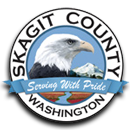|
What is a General Investigation or GI?
The Skagit River Flood Risk Management General Investigation ended in 2015. The letters below, dated April 1, 2015 and June 17, 2015, state the County's position in response to the Corps' request for a budget and timeline waiver.
What were the stages of the GI Study?
Reconnaissance Phase
- Determine Problem(s)
- Define Federal Interest
- Prepare a Project Management Plan
- Negotiate a Federal Cost Sharing Agreement
Feasibility Phase
- Identify, evaluate, and recommend an appropriate, coordinated,
and implementable solution
- Resulting Report: Feasibility Report and Environment Impact
Statement
Pre-Construction Engineering and Design Phase
- First phase of construction
This phase is complete when the first construction contract is
ready to award
Construction Phase
- Constructed in response to a completed feasibility study with
a Chief of Engineer's report
- Needs congressional authorization
Operations and Maintenance Phase
- Usually the responsibility of the local sponsor
What is the purpose and status of the Skagit
River GI Study?
The Skagit River GI is currently in the Feasibility Phase, also referred
to as the Skagit River Flood Risk Management Feasibility Study. The
Reconnaissance Study was complete in 1993. The primary intent of the
flood risk management feasibility study is to evaluate flooding problems
in the Skagit River basin from the Ross Dam reservoir (Ross Lake) to
Skagit Bay; to formulate, evaluate, and screen potential solutions to
these problems; and to recommend an alternative that has a federal interest
and is supported by the local entities.The Feasibility Phase includes
the following milestones:
- Existing and Without Project Conditions
- Research existing data and identify gaps
- Collect data (e.g. economic, environmental, geotechnical)
- Develop and analyze future without any projects
- Alternatives Formulation
- Develop measures (A measure is a feature (structural) or activity
(nonstructural) that can be implemented at a specific geographic
site to address one or more planning objectives)
- Develop screening criteria (e.g. completeness, effectiveness,
efficiency, and acceptability)
- Preliminary Screening of Measures
- Refine Measures
- Develop Conceptual Alternatives
- Develop Screening Criteria
- Preliminary Screening of Alternatives
- Refine Alternatives, bring to 10% Design
- Final Screening of Alternatives and Selection of Preferred
Alternative
- Detailed Analysis of Selected Alternative (35% Design)
- Selection of Recommended Plan (Current Status of Skagit River GI)
- Final Feasibility Report/Environmental Impact Statement
- Congressional Authorization of Project
The public, resources agencies, tribes, and advisory committees are engaged
at all stages of the GI. There are formal avenues for commenting, including
the National Environmental Policy Act (NEPA) stages and the Feasibility
Scoping Meeting. |
What are the opportunities associated
with the Skagit River GI?
- Reduce the risk of flooding and flood damages in urban areas
through the least environmentally damaging structural or non-structural
methods that are acceptable, cost effective, complete, and efficient.
- Improve public safety and reduce life risks during flood events.
- Provide flood risk management projects that support continued
agricultural production.
- Preserve and protect historic, cultural, and tribal resources.
- Reduce flood risk to major transportation corridors.
- Improve existing habitat within the river corridor.
- Reduce operation and maintenance costs of the existing levee system
to local and federal governments.
Related Resources:
2015
June
Letter to Army Corps of Engineers June 17, 2015
April
Letter to Army Corps of Engineers April 1, 2015
March
Army Corps of Engineers: Waiver: Janicki
Army Corps of Engineers: Waiver: Dahlstedt
Army Corps of Engineers: Waiver: Wesen
Concurrent Review Summary & Scope/Schedule/Budget for Study Completion
Feasibilty Schedule
Larsen / DelBene Letter
2014
Skagit River General Investigation NEPA Public Meeting presentation June, 2014
Status Update Presentation to the Board of County Commissioners June, 2014
Status Update Presentation to the Board of County Commissioners May, 2014
Draft Feasibility Report and Environmental Impact Statement May, 2014
2013
Skagit
River Hydrology Technical Documentaion August, 2013
US
Army Corps of Engineers: SMART Planning Milestones July 15, 2013
G.I. Status Update Presentation November 12 2013
G.I. Status Update Presentation May 15 2013
USACE
Approach to Climate Change and Sea Level Rise May 7 2013
Project
Status Summary: May 6, 2013
Project
Status Summary: February 26, 2013
2012
Spring 2012: Preliminary Alternatives Outreach Summary Report
September
26, 2012: Public outreach Comments Received
September
17, 2012: Status Update Flood Control Zone District Advisory Committee
February
2012, U.S. Army Corps of Engineers Civil Works Feasibility Study Program
Execution and Delivery
May
4, 2012 Public Outreach on Preliminary Range of Alternatives | Comment
Form
April
25, 2012 Preliminary Alternatives Presentation Read-Ahead
March
13, 2012 Feasibility Scoping Meeting Agenda
January
31, 2012 Skagit Review Plan
2011
January
31, 2011 Basin Levees
January
31, 2011 Levee Risk and Reliability Report
August
31, 2011 Skagit Revised Measures
September
1, 2011 Flood Narrative
September 1, 2011 Revised Economics
September
20, 2011 Skagit FSM Transmittal
September
1, 2011 Alternatives Formulation Strategy
November
23, 2011 Skagit HQUSACE Comments
2011
USACE NEPA Scoping Report
2010
June
18, 2010 Geotechnical and Hydrogeologic Report
December
23, 2010 Skagit Environmental Baseline
|





